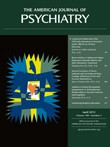The process of preparing for the release of DSM-5 has created opportunities for reconsideration of the validity of symptoms used to substantiate specific diagnoses. DSM-IV was initially published in 1994 and revised in 2000. DSM-5 is expected to be released in 2013. This edited volume includes data gathered and reviewed by leading clinicians and researchers in the field of eating disorders and provides a thorough discussion of the literature related to symptom specificity and profiles associated with different eating disorder presentations. The 23 chapters explore the challenges and questions prompted by some of the existing criteria or clusters of symptoms attributed to diagnoses, many of which are not as specific as they seem on close examination, are difficult to measure or validate, or are specific to certain cultures, ages, or genders. The level of detail in some chapters may exceed what the nonspecialist is interested in, but for providers and researchers who are focused on research or clinical care of individuals with eating disorders, the chapters encourage the reader to think beyond the limits of DSM-IV.
The book is organized into four sections. Part 1 is titled “Improving the Definition of Symptoms and Syndromes of Eating Disorders.” Part 2 includes more statistically oriented work and is titled “Empirical Approaches to Classification: Methodological Considerations and Research Findings.” Part 3 is focused on and titled “Eating and Feeding Disorders in Childhood and Adolescence.” Part 4 explores, as titled, “Cultural Considerations in the Classification of Eating Disorders.”
Many of the chapters throughout the book attempt to provide alternative approaches to clarifying the residual eating disorder not otherwise specified category. One of the most significant problems with DSM-IV has been that as many as 60% of eating disorder patients fall into the eating disorder not otherwise specified category. The chapters in section 1 explore the limitations of the current criteria for eating disorder diagnoses, including disordered cognitions, fear of weight gain, and frequency thresholds of behaviors for diagnosis. In chapter 4, Hilbert et al. explore the validity of binge size in binge eating disorder and examine objective bulimic episodes relative to subjective bulimic episodes. The experience of loss of control while eating is discussed by Field et al. (in chapter 6) as a critical factor in binge eating disorder and bulimia nervosa. They also discuss the likely lowering of the threshold from twice a week to once a week for binge eating disorder and bulimia nervosa episodes. The second section includes studies that confirm and validate aspects of the current eating disorder classification systems but also point out challenges in classifying individuals who currently fall into the default category of eating disorder not otherwise specified. Other possible approaches to classification are defined. In chapter 7, Crosby et al. note that while the primary purpose of DSM-5 is “to inform clinical practice, the diagnostic criteria specified in these systems are also often used in research” (p. 91). In the third section (in chapter 12), a group of clinicians and researchers from the Workgroup for Classification of Eating Disorders in Children and Adolescents (Bravender et al.) discuss the importance of “modifications to adult defined boundaries of illness” (p. 169), developmental considerations, lower thresholds, and shorter durations of symptoms for diagnoses. In chapter 13, Chatoor et al. suggest differentiation of eating disorders in infancy and early childhood into five categories: sensory food aversion, infantile anorexia nervosa, posttraumatic feeding disorder, feeding disorder associated with a concurrent medical condition, and oral motor feeding disorder.
Cultural considerations are the focus of the fourth section of the book, which includes an emphasis on sociocultural factors thought to play a central role in the development of body dissatisfaction. In chapter 17, Becker suggests that “social expectations and physical environment will shape and constrain symptom presentations, attribution of meaning and treatment seeking” (p. 264) for eating disorders. The final seven chapters explore the role of culture and ethnicity in eating disorders, including studies related to symptom presentations in Native American, Asian, and Canadian populations, the role of cultural variation in rationales for food refusal, the increasing prevalence of fat phobia and body dissatisfaction in China, the sixfold increase in the incidence of eating disorders in Japan (from the 1980s to 2006), and a study of unique culturally specific presentations of bulimic symptoms in indigenous populations in the Pacific islands.
Our classification systems are challenged to demonstrate clinical utility as well as scientific validity. The authors in the various chapters of this book remind us of the evolving science underneath our approaches to clinical diagnosis and the importance of periodic reevaluation and revision.

